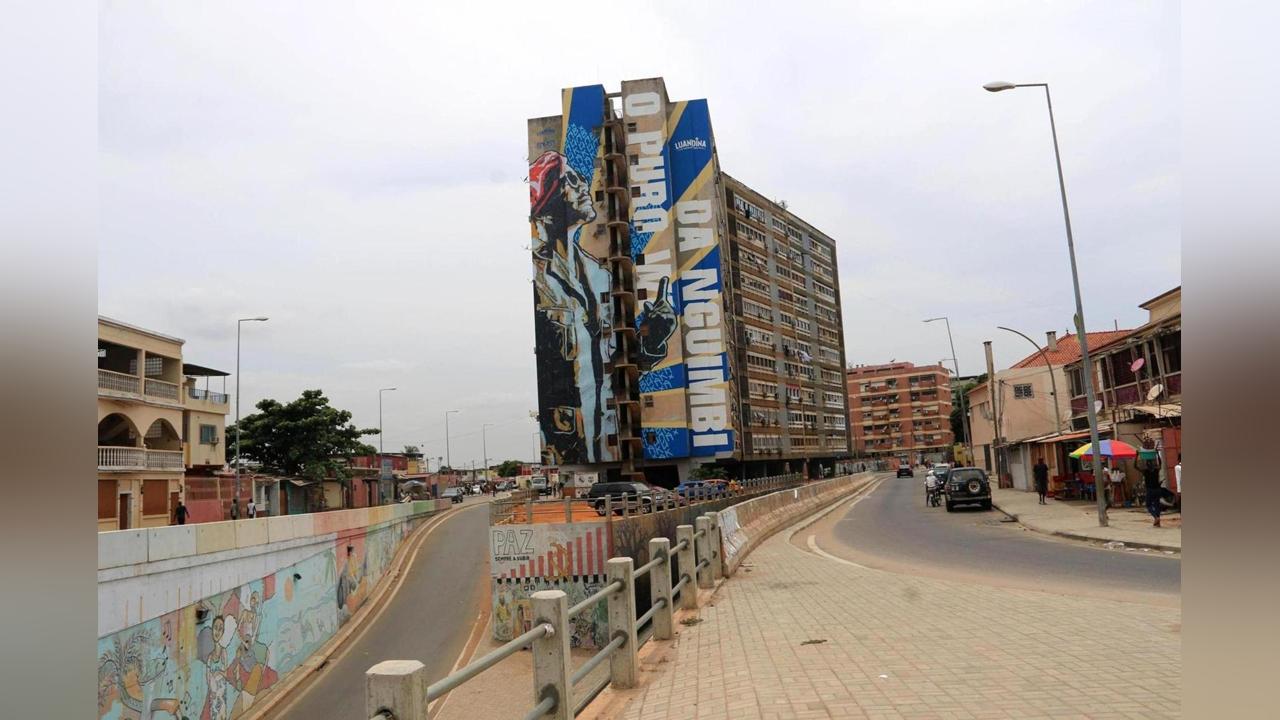Africa-Press – Angola. At least three buildings have collapsed in the last 20 years in the city of Luanda, founded in 1575 to house approximately 600,000 inhabitants.
This situation is due, roughly speaking, to the high state of saturation and wear and tear of the infrastructures, some of them built more than 50 years ago.
According to records, the first to collapse, in the period under analysis, was the building of the former National Directorate of Criminal Investigation (DNIC), located on the outskirts of Cidadela Desportiva, Avenida Hoji Ya Henda.
The collapse occurred in the early hours of March 29, 2008, killing 24 out of a total of 180 people inside the building.
According to the report of the commission of inquiry created at the time, the causes of the collapse were “the lack of capacity of the structural parts, namely pillars, beams and slabs, to withstand the excess of accidental and permanent loads” on the structure.
According to available records, in the same year, precisely on December 3, the headquarters building of the Diamond Security Corps, on Robert Shildes Street, collapsed, without, however, causing any casualties.
The disaster occurred shortly before 08:00 in the morning, with the offices of the usual employees deserted.
15 years later, history was recorded again, in the early hours of Saturday, March 25, 2023, this time with building 41 on Avenida Comandante Valódia.
The building, built in the Ingombota Urban District, collapsed around 2 am, at a time when it had already been evacuated by the authorities.
Unlike the former DNIC building, this one showed obvious signs of wear on the structure, which led to its interdiction, days before the occurrence.
According to several experts, heard by the press about the occurrence, the building already had sensitive areas, which could not support the weight of three people.
So far, no human victims are known, however, there are records of several material losses.
Work to remove the rubble will take place from the early hours of Saturday, and is expected to finish by early Monday morning.
The balance of the National Civil Protection and Fire Service points to the recovery of various material goods, such as gas cylinders and an amount of more than 100 million kwanzas among the rubble.
Interestingly, both the old ex-DNIC building and 41 of Comandante Valódia collapsed at dawn, significantly reducing the risk of victims.
In the specific case of building 41, in addition to the residents, it had some stores selling construction materials, so an occurrence during the day could be more drastic for people from Luanda.
demolished buildings
However, in the last 20 years, the country’s capital has also seen some buildings being demolished, because of the same problem: high risk of collapse.
Included in this range, the building of the old lake of Kinaxixi, of Cuca and the well-known building of Chechnya, the latter, an unfinished private structure.
The building in Lagoa do Kinaxixi, with 20 floors, housed more than 200 families, and construction began in 1972, but was never completed.
After national independence, on November 11, 1975, the building was invaded by the population, when only its structural part was completed.
The building was demolished at the initiative of the Government of Luanda, in an operation that lasted more than five hours, with the dismantling of the crane that was there.
Likewise, the unfinished building in former Chechnya was demolished in 2012 due to its advanced state of degradation. On site, a new building is being born, still under construction.
The same happened a year earlier, in 2011, with the Cuca building, demolished using modern technology, without affecting the roads or other adjacent buildings.
The families that lived in the building were transferred to the central offices Vida Pacifica (Zango) and K 44. The building, inaugurated in 1974, had 14 floors, 162 apartments and four commercial establishments.
The list also includes the building where the management of Angola Telecom operated, in the district of Maianga, Luanda, whose demolition process began in May and ended in August 2012, due to problems in the foundations, soil, cracks in the walls and ruptures in the pipes detected after an inspection carried out in May 2008 by technicians from the Ministry of Public Works.
At the time, the demolition company carried out the floor-to-floor process, from the top floor to the ground floor. The building, built in the 1970s, had 10 floors, each with eight apartments.
According to experts, the occurrence of building collapses in Luanda is essentially due to the long lifespan and lack of periodic maintenance.
Another factor has to do with fundamental alterations in the structure of the buildings, and an increase in the unforeseen gross load, with the construction of annexes and the placement of heavy machinery, such as generators and water tanks.
Buildings at imminent risk
As if the issue of the collapse and demolition of buildings were not enough, Luanda is confronted with a challenging reality, given the fact that it has dozens of old buildings that need intervention.
These are buildings with obvious signs of wear and tear, in their foundations and beyond, such as the “Sujo Building”, in Marçal, do Livro, in São Paulo, and the Maianga Tower.
The “Dirty building” had 120 apartments of type T1, T2 and T3, but registered clandestine constructions, currently having a total of 156 houses.
The property received restoration works on the outside, now having a more showy image on the outside, but the issue of the resistance of its foundations is still an open question, taking into account the changes made.
The building has cracks, more than two centimeters wide, which divide the building into two parts, and the danger adds up and continues day and night.
In turn, the Torre da Maianga building, with 15 floors, is located on Avenida Marien NGouabi, still known yesterday by many as António Barroso.
Abandoned since 1974, it is fenced off with sheet metal and has become a “barracks” for criminals.
Therefore, the state of conservation of buildings in Luanda, in particular, and in Angola, in general, is an issue that should be on the Government’s priorities, taking into account the accentuated wear and tear of buildings.
The so-called old town needs urgent intervention, and the maintenance of the buildings is an action that should not be delayed any longer.
The warning signs sounded and the answers are necessary.
For More News And Analysis About Angola Follow Africa-Press






